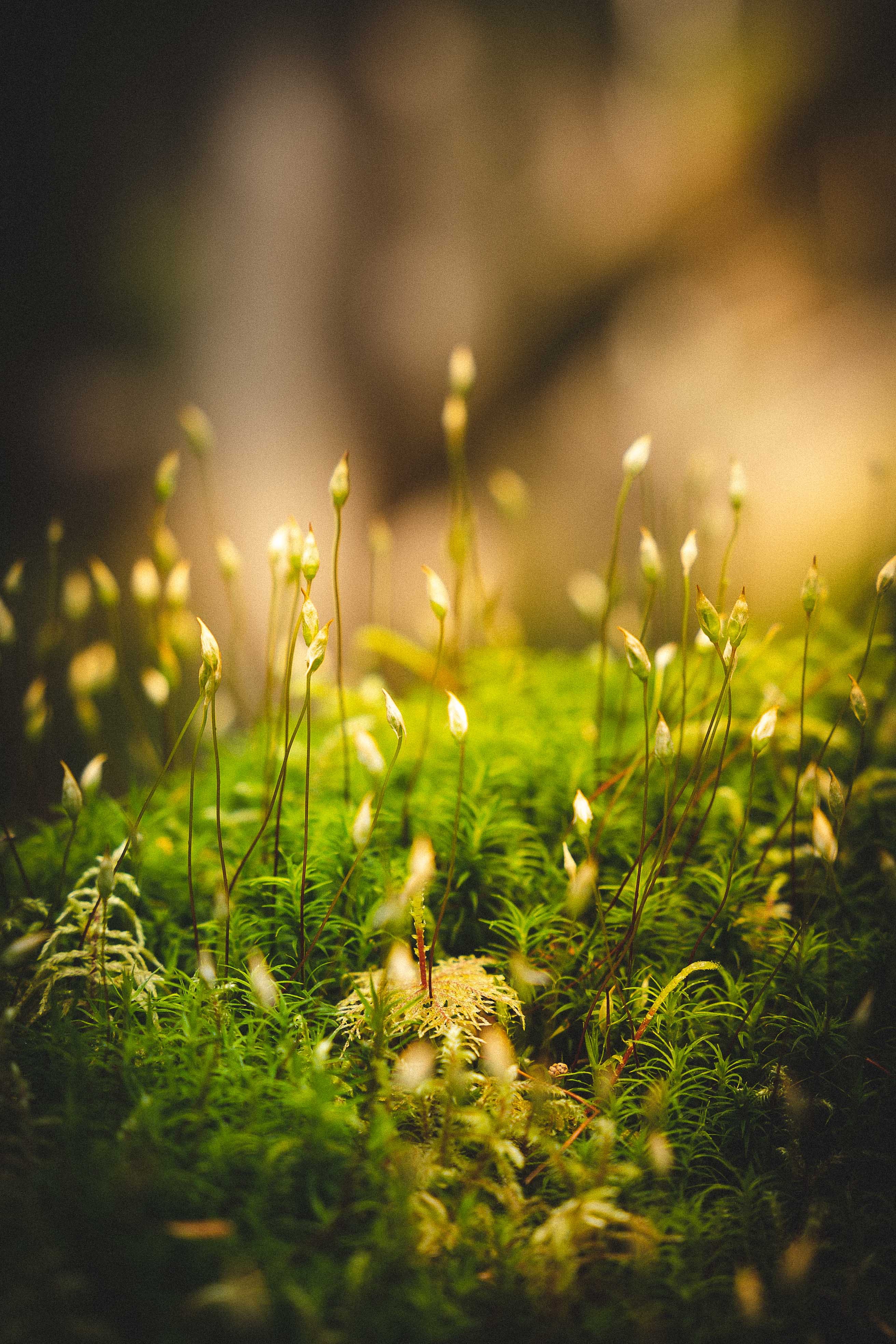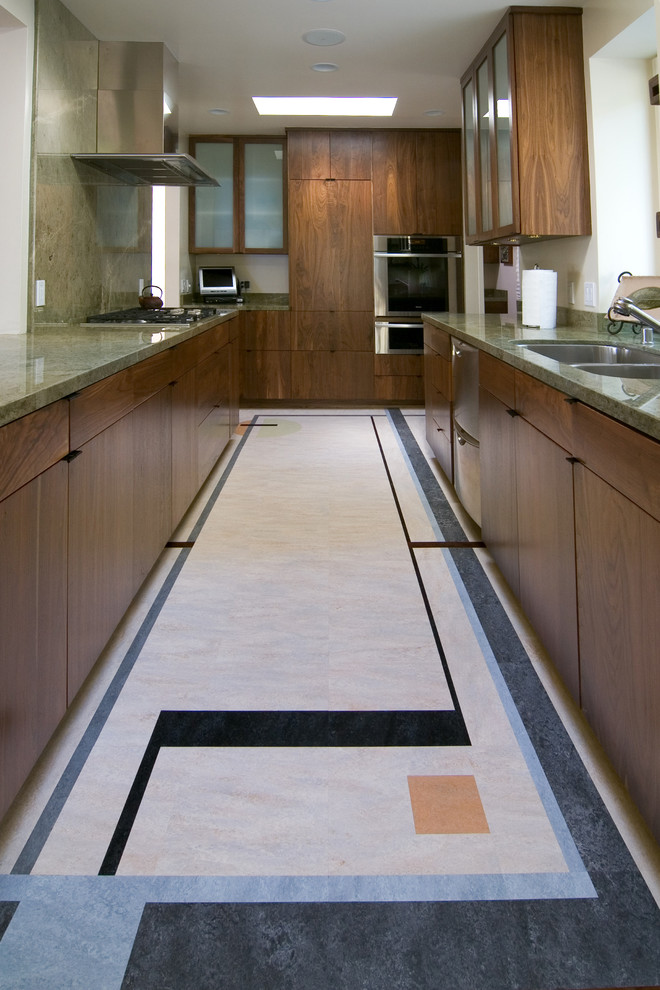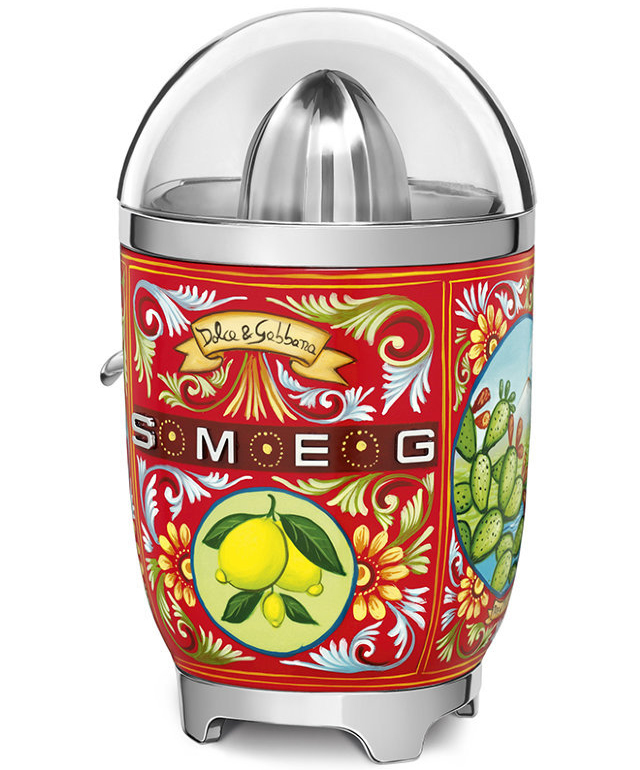Moss vs grass
Which one is best for a lawn? – World of Garden Plants
People are always trying something new or unusual. And so it is in our case, many people want to compare moss and grass as lawns or as ornamental plants. Here you will learn everything about these two plants.
The main difference between grass and moss is that moss does not need to be mowed and grass needs to be cut every week. The next difference is that moss needs shade or semi-shade, while grass needs full sun. In addition, moss needs high humidity, and grass can grow in normal humidity. Moss does not tolerate walking on it well. The grass is fine for humans walking on it and no trace is left behind. Moss does not need any fertilizer, while grass needs regular feeding.
| Moss | Grass | |
| USDA Hardiness zone | 3-9 | 2-11 |
| Mowing | no | required |
| Growth rate | medium | fast |
| Fertilizing | no | required |
| Sunlight exposure | semi-shade, shade | full sun, semi-shade |
| Soil | heavy, moist | moist, well-drained |
| Soil pH | 5. | 6.0-7.0 |
| Watering | every day in drought | 1-4 times per week in a drought |
| Diseases | – | fungus |
Moss and Grass
Humidity
Moss likes damp places so it is a bit difficult to grow it in the yard. The best place is where there is little sunlight and high humidity. This can be a place behind the house or under large trees.
In a dry place, moss will not be comfortable. Yes, it will survive, but it will grow slowly and look ugly.
Grass on the other hand is perfectly tolerant of humidity almost anywhere you plant it. The main thing is that it gets enough water, then it can tolerate low humidity, even in full sun, and it will look great.
If you need a green cover in full shade and very damp places then moss is just right. Grass in full shade and very wet conditions in most cases will die.
But if you need to create a lawn in a sunny spot, the grass is the best choice. Grass can be grown even in hot southern climates, which cannot be said for moss.
Grass can be grown even in hot southern climates, which cannot be said for moss.
Mowing
Grass grows faster than moss, and it is also much taller than moss. As a result, you need to regularly mow the grass lawn. In fact, this is quite a time-consuming affair, and if you hire someone to mow the lawn, it will also be a burden on the family budget. And that’s not counting the need to have a lawnmower and other supplies.
Also, grass lawn needs dethatching, aerating, and overseeding at least once a year. All of these are not easy and not cheap activities.
After mowing, dethatching and other actions, you accumulate a considerable amount of plant debris that needs to be thrown somewhere.
With moss, it’s much easier. It absolutely does not need mowing, let alone aerating or anything like that. You do not need expensive equipment to take care of lawn moss.
The only thing moss needs is a surface cleanup from fallen leaves. Otherwise, the moss will begin to die under a layer of old leaves.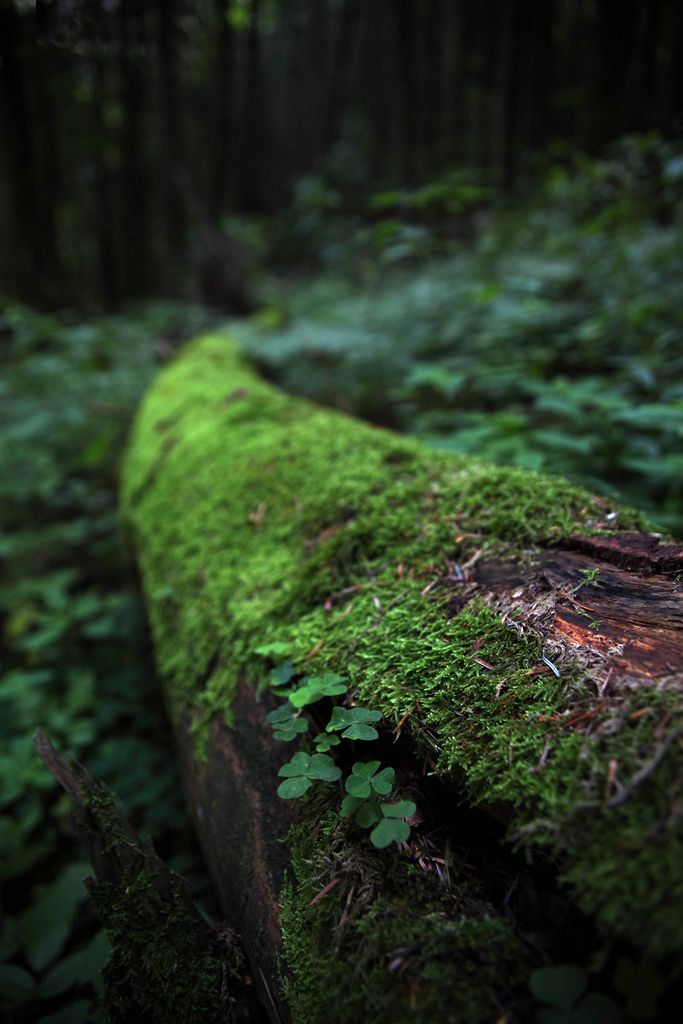 But you have to admit that cleaning the moss surface once a year and mowing the grass every week is not the same thing.
But you have to admit that cleaning the moss surface once a year and mowing the grass every week is not the same thing.
Fertilizing
For your grass lawn to look good you need to fertilize it regularly. There are many fertilizers on the market ranging from organic and mineral pellets to liquid fertilizers.
Some fertilizers are relatively cheap and everyone can afford them. But the price of some kits is quite high. There are even whole programs to which you can subscribe and get information and all the necessary components for fertilizing the grass.
Moss, on the other hand, does not need to be fertilized. A really undemanding plant – it doesn’t need extra minerals to grow well. What’s more, fertilizers can damage the moss. Everything that mother nature gives moss is more than enough for it to thrive.
As far as nutrition is concerned, grass clearly loses out to moss. If the cost of lawn maintenance is important to you, then moss is more suitable for your purposes.
Appearance
Since moss grows very densely, its surface looks very interesting and unusual. In fact, the surface of the moss resembles velvet and it is especially beautiful when it is wet and shiny. Moss is also very pleasant to the touch.
The appearance of a grass lawn is completely different. No matter how dense it is, individual leaves will be visible and this type of lawn will look different on the whole. However, a properly installed and well-maintained grass lawn will look just as good as a moss lawn.
The unusual appearance of a moss lawn may be a slight disadvantage as many people consider moss to be something that is not very pretty and not appropriate in the yard.
Insects
A frequent problem of grass lawns is insects that settle there. Between grass leaves, there is enough space for a large number of insects. They are easy to live and multiply because the grass gives them protection from the strong sun and sufficient moisture. Particularly annoying are the small flies, which multiply quickly if you do not cut the grass in time.
Moss, on the other hand, does not attract as many insects as grass. Due to the high density that I mentioned above, insects cannot move around easily in moss. Yes, some tiny insects live and multiply in moss, but their size and number are minuscule so they cannot cause any trouble.
Diseases
One of the weaknesses of grass lawns is their disease susceptibility. This is especially true for dense lawns with very little air between the leaves.
The list of possible diseases is quite long. Here you can see diseases that show up as leaf spots or large areas of grass may just rot away. Also, different types of mold or rust can affect the grass. To avoid this kind of trouble, you have to spray the lawn with different fungicides, and you have to do it regularly.
Moss on the other hand does not require anything like that. This plant is very resistant to disease, especially fungal diseases. Moreover, moss is often used as an antifungal agent. For example, peat moss is used to grow seedlings.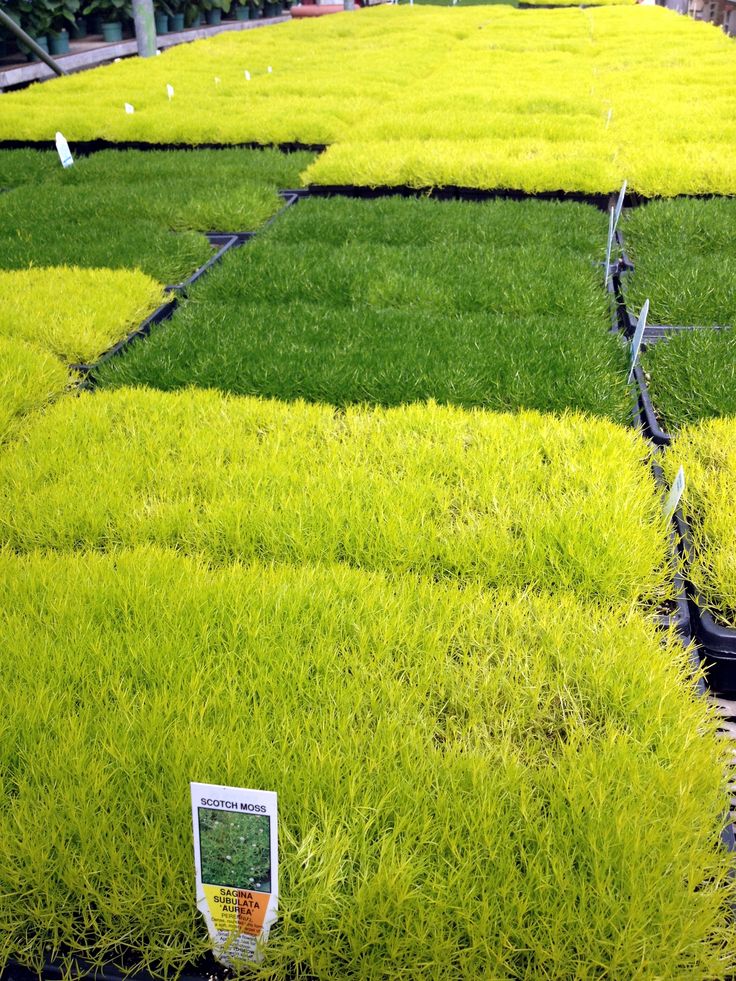
On the whole, by choosing moss for your lawn you will not only avoid disease problems, but you will also have a more eco-friendly lawn.
Weeds
With weeds, moss shows itself very well. Seeds of other plants on the surface of the moss almost do not germinate. This does not mean that there will be no weeds, but their number will be very small.
With grass the situation is different. It is relatively easy for weeds to wedge themselves between the grass and start spreading. Crabgrass is especially dangerous because it is not visible at the beginning, but when it spreads over the lawn, it is difficult to get it out.
There are even special herbicides that do not damage the grass but are quite effective against weeds. You don’t need all this with moss.
Watering
As I mentioned earlier, moss needs a moist environment. It also needs a lot of water for normal growth. Moss can withstand periods of drought, but it shrinks in size and can detach from the ground.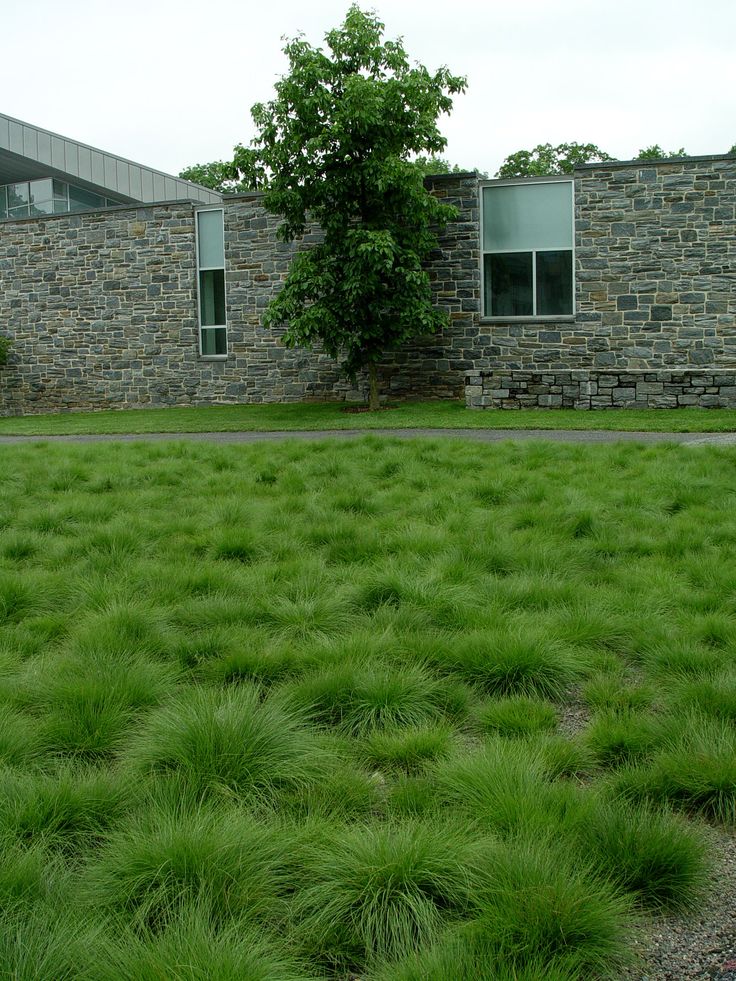 If there is a lack of moisture, the moss will not look good.
If there is a lack of moisture, the moss will not look good.
Where you plant the moss will determine how often you water it. If the place is very wet, such as near a stream or pond, then watering should be infrequent. But if the place is dry and there is a lot of sunlight, you may have to water very often.
Grass on the other hand does not need such frequent watering. Yes, for a grass lawn to look nice it needs watering too. In periods of summer heat and drought, grass needs to be watered almost every day. But in general, grass needs less water than moss.
Soil
As for the dirt, there are also some differences. Moss prefers acidic soil, it is an ideal environment for it. But most soils are neutral, so moss tolerates it to some extent. The only thing a moss cannot tolerate is alkaline soil because in such ground it will turn yellow and will not develop well.
Grass on the other hand requires a neutral pH. Slightly acidic or slightly alkaline soil will also be acceptable.
As for nutrient content, grass needs rich soil. It is better if it is humus or something similar. Mosses in turn perfectly tolerate poor substrates and can even grow on rocks and stones. Any kind of soil is equally suitable for growing moss.
The heavier and denser the ground, the better for moss because it has a surface root system and only clings to the surface of the ground. Grass on the other hand has deeper roots and can therefore grow on looser soil.
Sun
The next thing we need to talk about is the sun. Grass and moss have a very different attitude toward sunlight.
Grass tolerates both full sun and partial shade just fine. Grass needs to be watered more often if it grows in full sun to look beautiful. In the semi-shade, it needs much less water. In full shade, grass will not grow normally. Yes, some types of grass tolerate full shade, but overall, most grasses prefer full sun.
Moss is the exact opposite. This plant needs full or partial shade. The more shade the better.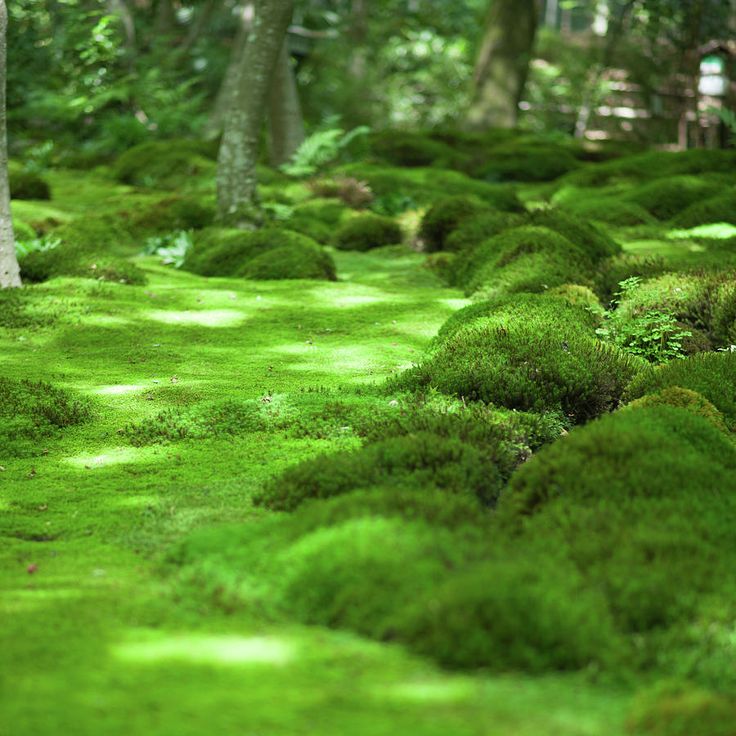 As for the sun, almost any type of moss will survive in full sun, but its appearance will be meager if not awful. Some mosses can tolerate full sun, but they need plenty of water. Growing a large area covered with moss in full sun is quite difficult.
As for the sun, almost any type of moss will survive in full sun, but its appearance will be meager if not awful. Some mosses can tolerate full sun, but they need plenty of water. Growing a large area covered with moss in full sun is quite difficult.
Durability
And the last is the resistance to mechanical stress. Grass perfectly tolerates walking on it. You can even sometimes drive over a grass lawn with a car and nothing critical will happen, there will be almost no marks.
Moss is much worse in this respect. Walking on moss is not allowed, because shoe damage is left on it. Even dogs running on the mossy lawn can easily damage it. Driving a car through the moss is out of the question.
Unfortunately, moss is a very fragile plant and is not suitable for walking on it. The only way you can use it is to make stone paths in a shady garden where the rest of the surface is covered with moss. You can move in such a garden only on these paths.
Moss vs grass lawns: The best option to save money and time
There are many factors that go into lawn care, from how often to mow to what kind of grass to plant.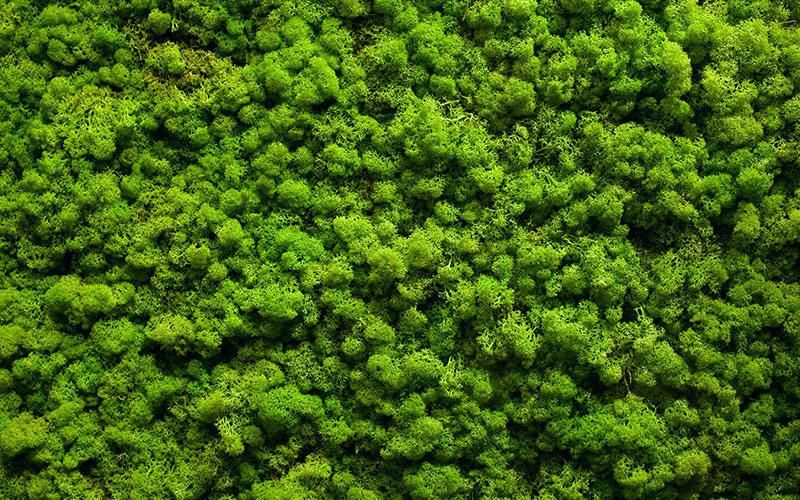 Most of these factors, though, deal with caring for grass lawns. What if there were another kind of lawn that was potentially better suited for you? That better option might just be moss lawns. Not sure what a moss lawn is, or whether it might be a good fit for you? Don’t worry, we’ll go through all the pros and cons of both grass and moss lawns, so you can decide for yourself which you’d like to try.
Most of these factors, though, deal with caring for grass lawns. What if there were another kind of lawn that was potentially better suited for you? That better option might just be moss lawns. Not sure what a moss lawn is, or whether it might be a good fit for you? Don’t worry, we’ll go through all the pros and cons of both grass and moss lawns, so you can decide for yourself which you’d like to try.
Contents
- What are moss lawns and grass lawns?
- Climate preferences
- Basic care
- Diseases and pests
- Lifespan
What are moss lawns and grass lawns?
Grass lawns are what you most likely picture when you think of lawns. They are an area outside a house or home planted entirely or mostly with one or more types of grass. There are roughly 12,000 types of grass, many of which are used in lawns. Some of the most common types of lawn grasses are fescue, Kentucky bluegrass, and ryegrass.
Moss lawns are a little less common, but not unheard of.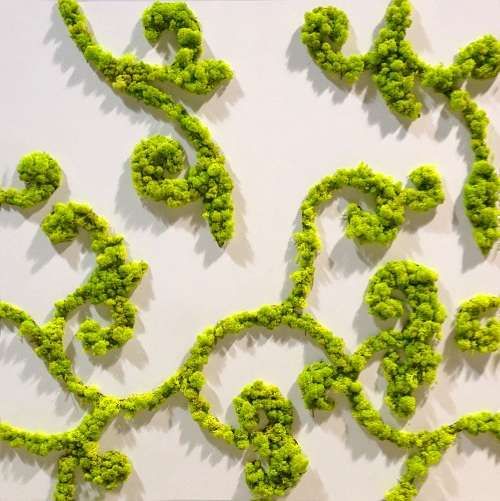 They are similar in form and function to grass lawns, except they’re planted with moss instead of grass. There are fewer varieties of moss typically used for lawns, as some moss varieties grow quite slowly. Of the faster growing moss varieties, sheet moss and fern moss are two of the most commonly used mosses for lawns.
They are similar in form and function to grass lawns, except they’re planted with moss instead of grass. There are fewer varieties of moss typically used for lawns, as some moss varieties grow quite slowly. Of the faster growing moss varieties, sheet moss and fern moss are two of the most commonly used mosses for lawns.
Climate preferences
A benefit to the wide variety of grasses that can be used in lawns is that there are grasses suitable for practically any climate. You can plant cool weather grasses, like Kentucky bluegrass, annual ryegrass, or tall fescue if you live in a cooler, more northern region. There are also warm weather grasses, like St. Augustine grass and bermuda grass for those in hotter areas. You can even plant a mix of both, for a year-round lawn in regions with distinct seasons.
Moss, on the other hand, is a little less versatile. In general, moss grows in cooler, shadier places. In particular, moss is often found besides rivers and under trees, where there’s protection from heavy sunlight. As you might expect, this means that moss lawns do best in lawns with partial shade and tend to dry out in hotter, sunnier climates.
As you might expect, this means that moss lawns do best in lawns with partial shade and tend to dry out in hotter, sunnier climates.
Basic care
Picking the right grass for your climate can cut down on the care your lawn requires, but there are still a few things grass needs that moss doesn’t. Depending on your soil type, your grass may need fertilizers, and compacted soil needs to be aerated so the grass can absorb nutrients properly. Moss can grow in almost any soil type without fertilizers or aeration. Additionally, grass lawns need to be mowed, while moss lawns don’t. However, in hotter climates, moss lawns require more water to avoid drying out than climate-appropriate grass lawns.
Diseases and pests
Moss are fairly healthy, and few pests or diseases affect them directly. However, they can be a habitat for various small insects and fungi. Some of these insects are beneficial. For example, fireflies enjoy laying their eggs in moss. Others, like aphids, can become problems for your gardens.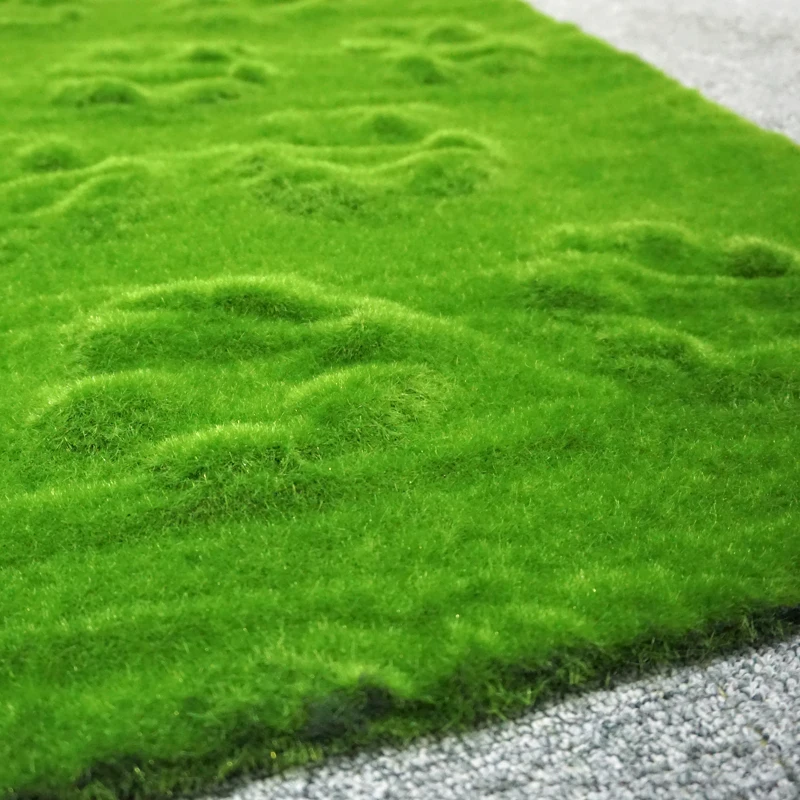
Grass, on the other hand, can be affected by a variety of fungal infections. Many of these can be avoided with proper care, though. The majority of these problems are caused by either overwatering—watering too late in the evening resulting in chronically wet soil overnight—and a lack of nitrogen in the soil.
Lifespan
Both grass lawns and moss lawns can last up to ten years, depending on the variety of grass or moss used and how well it’s cared for. However, one additional factor that can impact the lifespan of both lawn types is the wear and tear of everyday life. In particular, the pressure of foot traffic, play, and furniture.
Consistent pressure in a specific area will eventually kill even the hardiest of grasses. Both moss and grass have the ability to bounce back from light, occasional pressure. However, grass is generally more resistant to heavier, more regular pressure than moss is. While both lawns can be walked on without issue, if you have children or pets that enjoy running and playing outdoors, you’re more likely to see damage to a moss lawn than a grass lawn.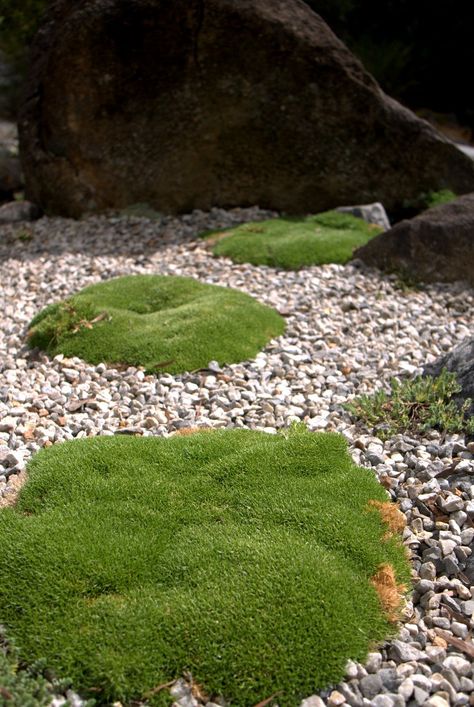
Both lawns have plenty of benefits and drawbacks, so the better lawn depends heavily on your circumstances and what you’re looking for in a lawn. If you live in a cooler climate, want a lawn that requires little care, and don’t foresee heavy use, then a moss lawn can save you time and effort. Grass lawns may be a better fit for those of you in hotter climates and a need for a lawn that can hold up under heavier wear and tear.
Editors' Recommendations
- Why mulching might be the best option for your old Christmas tree
- These are the 10 best gardening shows to stream right now
- A guide to winter lawn fertilizer for keeping your turf healthy this season
- 4 outdoor gardening projects to focus on this November
- Can you leave beets in the ground over winter? Here’s what to know about storing beets for winter
Moss on the lawn how to get rid of and remove it?
Instead of tender green grass, moss has appeared on your lawn? We urgently need to take action to save the lawn! In our article you will learn how to deal with moss on the lawn.
There are many reasons why moss can appear on the lawn:
- Too wet, swampy soil;
- No drainage layer;
- High soil acidity; nine0007 Shaded area;
- Lawn patches dying off.
As you can see from this short list, the main reason is a lot of moisture on the lawn, which provokes the active growth of moss. The impossibility of the soil to absorb moisture, combined with the shaded terrain, leads to the active suppression of grass growth and the gradual replacement of plants with moss.
If this problem has not affected you yet, then pay attention to where your lawn grows. Broke a lawn under the crowns of trees? Give it good drainage! nine0003
If moss grows on your lawn, then you need to understand in detail the cause of its occurrence and take the necessary set of measures aimed at its speedy destruction. To do this is not as easy as it seems at first glance, but following our instructions, you can easily do it!
What to do if moss grows on the lawn?
You have found a problem, but what to do if moss appears on the lawn? Our answer is to fight! There are several main ways to deal with this trouble - chemical (using special tools) and mechanical (moss removal). Read about the advantages and disadvantages of each method below. nine0003
Read about the advantages and disadvantages of each method below. nine0003
The chemical method is the use of the latest herbicides that help destroy the weed (in our case, moss). However, moss is designed in such a way that it is rather difficult to influence its vital activity and reproduction, even with the use of harmful chemicals. No wonder it grows near industrial plants and urban facilities. Therefore, the chemical method must be used in conjunction with other measures.
The chemical method also includes the use of fertilizers that affect the condition of the soil. nine0003
How to remove moss from the lawn by other means? By mechanical means! Weeding (if you can call it that in the case of moss) is one of the most effective means of controlling any weeds on the lawn. We will tell you about all the intricacies of removing moss manually or using improvised means in the following paragraphs.
How to deal with moss on the lawn with improvised means?
Since the use of herbicides alone is not enough to completely destroy the moss, ingenuity and ingenuity must be shown to cope with this scourge. Moss on the lawn? How to get rid of it quickly and without hassle? nine0003
Moss on the lawn? How to get rid of it quickly and without hassle? nine0003
- For more effective control, moss should be removed from the entire surface of the lawn. Even if you do not see it throughout the site, this does not mean at all that it does not exist. Thoroughly walk the rake over the lawn to remove all the moss.
- Gather moss residues frequently and remove them from the grass. The more often you rake, the finer the moss becomes. This means that the chance of leaving him on the lawn increases, where he can take root again.
- Remove the dead grass along with the moss. The lawn looks extremely unattractive if it has bald spots and yellowed grass. Dry grass only provokes the appearance of moss on the lawn - so feel free to get rid of it. nine0008
- Minimize exposure to adverse factors. A large amount of shade and moisture is harmful to the lawn. Look at the trees and bushes. Maybe it's time to cut them? So you will not only provide access to light, but also help the plants get rid of extra branches.
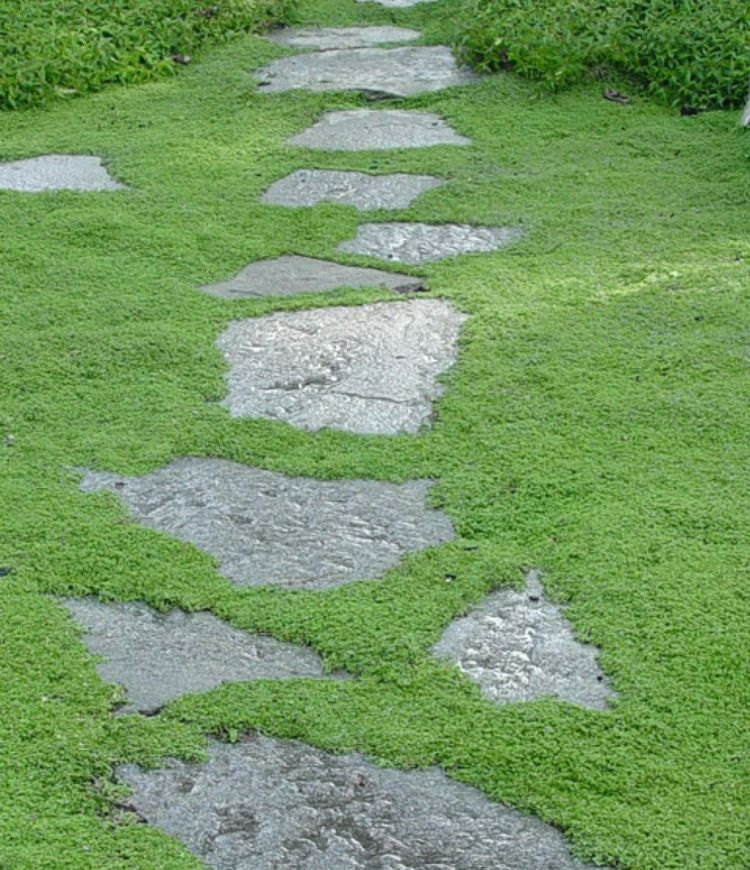
By following these simple steps, you can remove the moss and prevent it from re-forming.
Moss on the lawn - how to get rid of it
In combination with mechanical removal, chemical agents should also be used. Before you decide how to get rid of moss on your lawn, decide for yourself what products you will use.
Fertilizers are among safe products, which, however, require a long waiting period. Since weeds and moss begin to grow from a lack of minerals in the soil (the grass most often dies from this), replenishing their supply can significantly reduce their growth. When choosing fertilizers, preference should be given to complexes rich in nitrogen, potassium and iron. It is these trace elements that are most often absent in the soil. nine0003
Some fertilizers can not only provide the lawn with "usefulness", but also normalize the acid-base balance of the soil. The attentive reader remembers that moss grows on the lawn, the soil of which has high acidity.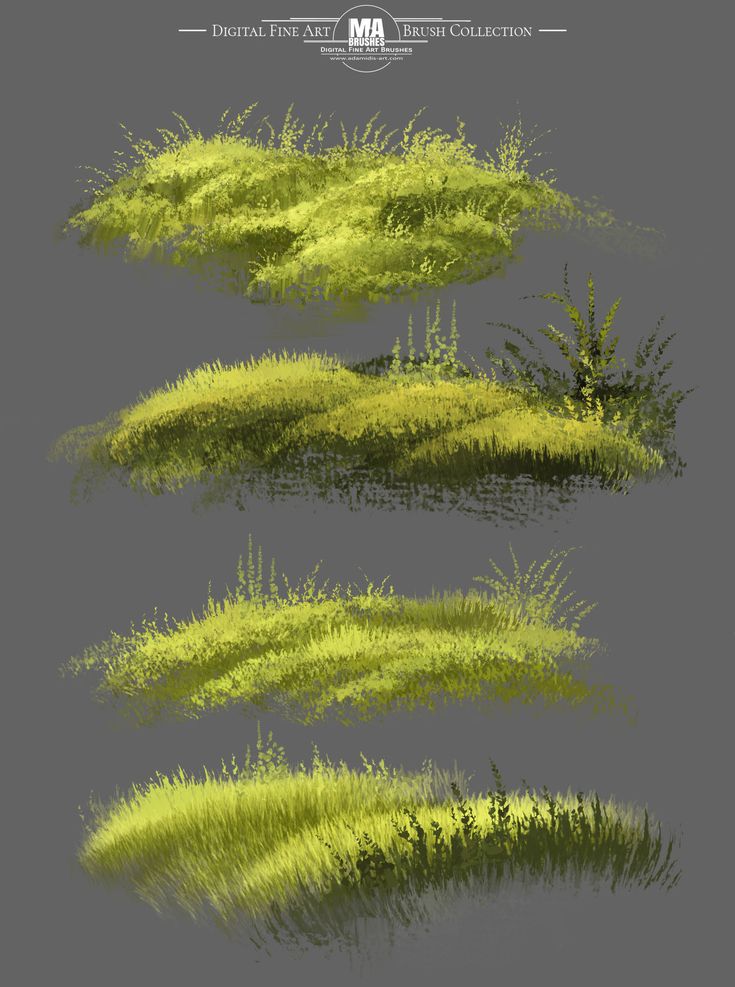 Ferrous sulfate and nitrogen are the perfect combination for moss control.
Ferrous sulfate and nitrogen are the perfect combination for moss control.
Herbicides will also help kill moss from your lawn. Use specialized products or preparations based on glyphosate or ferrous sulfate. They are the recognized "destroyers" of moss. nine0003
How to remove moss from the lawn correctly
After reading this article, you have probably decided for yourself how to deal with moss on your lawn. We just want to add the advice of professional gardeners who are happy to share with you their experience in removing moss from the lawn.
- When combing the lawn, try to use a fan rake. Conventional garden rakes have too wide teeth and moss constantly "slips" through their teeth. nine0008
- Use only proven herbicides that are specifically designed for lawns. Otherwise, you risk destroying the entire coverage.
- How to remove moss from your lawn so that it does not return? Combine this procedure with aeration.
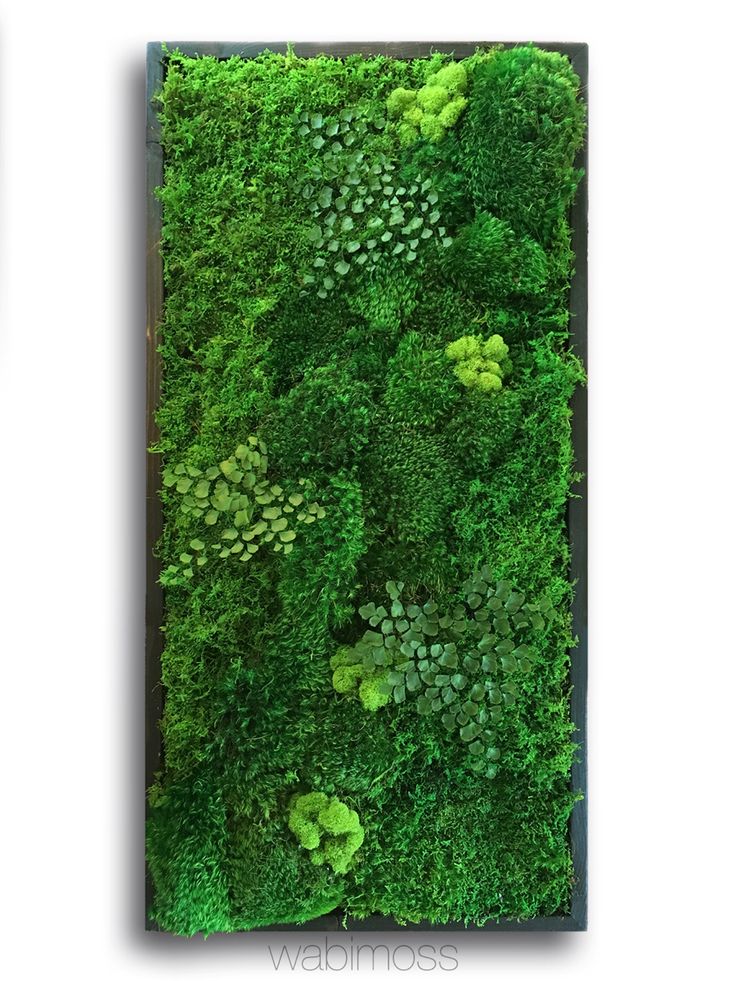 Aeration is the perforation of the earth to ensure the flow of minerals to the roots, as well as to improve the absorption of water. Owners of lawns on clay soils should be especially attentive to the aeration procedure. nine0008
Aeration is the perforation of the earth to ensure the flow of minerals to the roots, as well as to improve the absorption of water. Owners of lawns on clay soils should be especially attentive to the aeration procedure. nine0008 - If the lawn can no longer be saved, you can break it in the same place again, after making a water drainage system. It won't take long, but you'll end up with great coverage!
By following the simple rules for dealing with moss and knowing the causes of its occurrence, you can easily get rid of it from your lawn!
Back to the list
7 ways to get rid of moss in the lawn
If moss grows on the site, despite all your efforts, instead of a gorgeous lawn, it's time to determine the root cause of its spread and get rid of it once and for all. nine0003
nine0003
There are several ways to get rid of moss on your lawn. Which one to use is the personal choice of each owner of a private house.
Method 1. Soil deacidification
Determine the pH and nutrient content of the soil. If this is not possible, then there is no doubt that the presence of moss in itself is an indicator of the high acidity of the soil. It is desirable that lawn grass competing with moss tolerates an alkaline environment well. A healthy lawn will require liming the soil and top dressing with organic fertilizers, compost, manure or other organic matter. It is necessary to make lime 2 times during the growing season. nine0003
Method 2. Soil loosening
The second step is loosening the compacted soil. Moss has shallow roots, it will not be difficult to rake it. Moss must be vigorously removed from the entire surface of the lawn with a rake, this will improve aeration. A fine-toothed rake or a lawn mower blade is perfect for this job.
Method 3: Application of herbicides
Mechanical moss control can be replaced by chemical control. Any glyphosate-containing herbicide will work, as well as ferrous or ammonium sulfate. The working solution is prepared at the rate of 90 ml of ferrous sulfate per 20 liters of water or from 60-150 ml of copper sulfate per 16 liters of water. Approximately 300 sq.m. can be treated with such a solution. Many people use a solution of soda, soap, or dishwashing detergent to fight moss. To do this, dissolve 200 g of baking soda in 2 liters of warm water and spray it on the area. But this method will give only a temporary effect.
Method 4: Decreasing soil moisture
Controlling excessive soil moisture is another way to get rid of moss in your yard. There may be a drainage problem in the area. In such areas, water, as a rule, seeps slowly through clay soils. In this case, the soil needs to be loosened and its structure improved by adding sand and humus. nine0003
nine0003
To prevent the appearance of moss after mowing the lawn, remove the straw immediately. A thick layer of straw can interfere with the penetration of water through the soil and the evaporation of water from its surface. Also, don't water your lawn too much. It is especially necessary to avoid watering at night, in early autumn or spring, the moss that has grown during this period is the most persistent.
Method 5 Eliminate excess shade
Another way to forget about moss on the lawn is to eliminate excessive shade on the site. To do this, you can choose shade-tolerant herbs (hellebore, fern, hydrangea, brunner), or you can provide more sunlight (for example, remove a tree or spreading bush). nine0003
Method 6. Fertilizing
Fertilizers with a high content of nitrogen, potassium and iron should be used to fertilize the lawn.
Method 7: Lawn Crop Replacement
Moss can grow in bare lawn areas where grass does not grow well. If there are such areas, it means that grass was chosen for the lawn that is not sufficiently resistant to shady conditions.